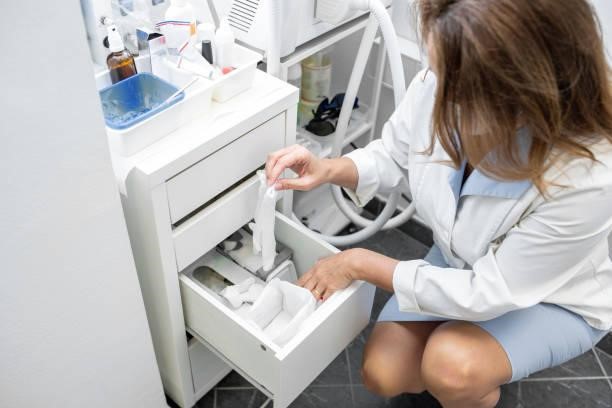In today’s age, urinary incontinence affects millions of people worldwide. It occurs when a person loses some or all control over their bladder, leading to accidental urine leakage. While urinary incontinence is more common in older adults, it can happen to people across all age brackets. With that being said, dealing with urinary incontinence can be challenging, but technology offers new solutions to help manage symptoms and improve quality of life.
While the technology has immensely contributed to the adult diaper industry, here are five ways they allow adults to accommodate urinary incontinence:
1. Adult diapers
In the past, bulky adult diapers and pads were the only option for managing urinary incontinence. However, disposable adult pull up diapers and pads provide more discretion and comfort. Brands are at the forefront of creating high-tech underwear using innovative fabrics with moisture-wicking and absorbent layers. The underwear looks and feels like regular underwear but has leak-proof properties.
Further, there are pads that have odor-blocking technologies like carbon panels and microbeads that trap odors. Some pads also have soft cotton covers to keep wearers dry and comfortable. Disposable adult diapers and pads give people more choice in finding the right product that meets their absorbency needs while providing discreet protection.
2. Leak detection sensors
Miniaturized sensors can detect urine leakage events in real-time. The sensors connect to your smartphone and use proprietary algorithms to interpret data and identify leaks. The sensor is typically worn in your underwear or on a pad. It monitors for moisture and discharge, sending alerts when it detects a leak. This gives you immediate feedback to assess the situation and change clothes or pads.
Besides, some apps even allow you to log details like activities before leakage to identify triggers. The sensors provide valuable perineal monitoring and let you know when a leak occurs, granting awareness of accidents and data to understand patterns.
3. Biofeedback therapy devices
Devices using biofeedback technology allow people to gain control over pelvic floor muscles that support bladder control. Options like Elvie Trainer, Carin, and PeriCoach use app connectivity and visualizations to help strengthen pelvic floor muscles. Elvie Trainer uses sensors to monitor how you squeeze and contract pelvic floor muscles.
Further, the connected app displays results, helping ensure proper technique. PeriCoach works by inserting a sensor vaginally, which monitors pelvic floor activity. It provides stimulation to remind you to contract pelvic floor muscles throughout your day. Using biofeedback devices leads to faster gains in pelvic strength, which builds continence and prevents leakage. These innovations complement traditional physical therapy.
4. Electrical stimulation therapy
Electrical stimulation therapy uses mild electrical pulses to stimulate nerves that control the bladder. There are devices that can transmit electrical currents through probes inserted vaginally or electrodes placed on the body. Typically, the current stimulates the sacral nerves, influencing the bladder and pelvic floor. The electrical impulses trigger nerve activity that helps rehabilitate an overactive bladder.
By stimulating nerves involved in continence, you can reduce the urgency and frequency of urination. FDA-approved electrical stimulation devices can be conveniently used at home to improve bladder control. Clinical studies show electrical stimulation therapy’s efficacy in treating incontinence.
5. Smart toilet technology
Smart, app-enabled toilets include features to alleviate challenges posed by incontinence. These high-tech toilets have built-in bidets with water heating, drying, and deodorizing options to promote hygiene and cleanliness. Some models even include UV light for sanitization.
Besides, the auto-open and auto-close lid functions also reduce contact with the toilet. Compatible smart toilets allow you to track data related to continence, like urine flow rate and volume. The toilets aim to automate flushing to make toileting more convenient and dignified. Smart toilet technology provides key advantages to boost confidence and independence.
Conclusion
Advanced technologies provide innovative ways to manage urinary incontinence discreetly and comfortably. Smart underwear and pads give people more choice through high-tech, leak-proof fabrics that look and feel normal. Miniaturized sensors offer real-time monitoring to identify leaks as they occur. Biofeedback devices build pelvic floor strength to prevent leakage, while electrical stimulation therapy helps rehabilitate overactive bladders. Smart toilets automate features to promote continence and dignity.
Together, these technologies are transforming approaches to dealing with urinary incontinence. Smart underwear and pads absorb leaks confidently. Sensors grant valuable awareness of accidents. Biofeedback and electrical stimulation therapies complement traditional training to boost pelvic and bladder control.
Smart toilets make toileting more convenient. Leveraging these innovations can significantly improve incontinence symptoms, promote pelvic and bladder health, reduce reliance on aids, and, most importantly, enhance quality of life. Advanced technologies are minimizing the challenges around urinary incontinence management. Those suffering from bladder control issues now have more customized and discreet solutions to regain confidence and optimism in their daily lives.











Add Comment